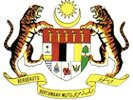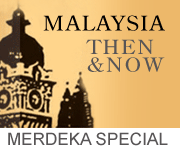Choose one!.

It’s a tropical paradise where both sun and sea worshippers as well as nature lovers and heritage trail seekers would be right at home, writes
AS your plane noses in for the landing, the first thing you see through the porthole is the stunningly azure sea and then, it strikes you just how narrow the island of Cebu is.
Actually, that’s just the main island. It comprises a group of islands that form the Visayas, central of the three main Philippine island groups.
The airport itself is on Mactan, where a string of luxurious resorts hug the almost-manicured beach front on the southern side, led by the Shangri-La Mactan Island Resort & Spa.
The road to your hotel will pass through some of the poorer parts of town and you’d wonder if the islands are all made of shanty buildings.
It used to be part of the Malay empire around 500 AD and early inhabitants refer to this island as Zebu. The Spanish, led by Ferdinand Magellan, landed here in 1521.
The Province of Cebu actually comprises the long, narrow main island and many smaller islands like Mactan, Bantayan, Camotes and Olango.
Mactan is connected to the main island via two bridges — the Mandaue-Mactan Bridge and the Marcelo B. Fernan Bridge – so there is no fear of being isolated though there is plenty to do on Mactan itself.
Lapu-Lapu City, just five km from the harbour, is named after a chieftain of the island. Datu Lapulapu killed Ferdinand Magellan in the Battle of Mactan in 1512 and on the island, you can see a huge statue of him (Lapulapu) at the Mactan Shrine.
Cebu, Naturally
From the central mountains to the coral sands, Cebu is a natural wonder. Tourists can go on cruises, dive and simply lie back to enjoy the white sandy beaches and turquoise blue seas.
Mountains streams cascade from misty heights to the sea. Colourful butterflies contrast with flocks of noisy birds. Top scuba diving spots are located off the shore and there are regular sightings of dolphins and whales in the surrounding seas. Popular sites are in Mactan Island and at Malapascua Island where divers check out the Tapilon Japanese Wreck and the Dona Marilyn Wreck.
Don’t worry if you haven’t brought your diving gear; most hotels and resorts along the coast have complete diving facilities and dive instructors.
There are also dive safaris that are inclusive of accommodation, round-trip transfers, meals, boats, guides, etc.
Those who prefer something on land can visit the Jumalon Butterfly Sanctuary, run by artist-lepidopterist J.N. Jumalon.
Located in Cebu City, this sanctuary provides a natural habitat for over 50 species of butterflies and many more kinds of moths. Also, visitors can admire the 100 types of flowering plants that are grown to provide sustenance for the butterflies.
Don’t miss Jumalon’s lepido-mosiac “paintings” which are stunning artworks made by recycling discarded butterfly wings. There is also his butterfly collection which includes butterflies from other countries.
Orchid lovers flock to the Orchid Gallery in Maolboal, which has one of the biggest, most impressive orchid displays in South-East Asia, with over 200,000 kinds of orchids. Feast your eyes on vandas, cattleyas and tropical varieties from Asia, South America and Hawaii.
Or head for the Olango Wildlife Sanctuary that covers a total of 920 hectares of sand flats, mudflats, mangroves, sea grass beds, sandy ridges and coconut groves. Olango grew popular after the Philippine Wetland and Wildlife Conservation Foundation discovered the presence of over 50,000 migratory birds in the area, The best time to visit is during the peak of the migration months from September to November (when birds fly south) and from February to April (northward migration).
Culture & Heritage
Check with the concierge for local tours to historic spots like the Mactan Shrine where the statue of Datu Lapulapu stands and the many churches. Some of these places include:
Magellan’s Cross: Planted in April 21, 1521 by Ferdinand Magellan, it marks the spot where the first Christian Filipinos, Rajah Humabon, Queen Juana and about 400 of their followers, were baptised by Pedro Valderema.
Image of Santo Niño: Considered as the oldest religious relic in the Philippines, the image of the Santo Niño, or Holy Child, was given by Ferdinand Magellan to Queen Juana, among the first Filipinos to be Christianised, as a baptismal gift in 1521. The image survived a great fire in 1565 unscratched. It has since been deemed miraculous and venerated by the Cebuanos as their patron saint.
Basilica Minor del Santo Niño: Built in 1565 by Miguel Lopez de Legaspi and Father Andres Urdaneta, this church is on the site where the image of Santo Niño was found. It was destroyed by fire three years later and rebuilt in 1602.
Fort San Pedro: Work on this, the smallest, oldest tri-bastion fort in the country, began in 1565 and was completed only 1½ centuries later. It’s purpose was to protect the Spanish settlers from pirates. During World War II, from 1941 to 1945, it served as fortification for Japanese soldiers. It now houses the National Museum that showcases the San Diego shipwreck and Fort San Pedro diggings.
Colon Street: The oldest street in the Philippines was built by the Spaniards in the time of Miguel Lopez de Legazpi. Named after Christopher Columbus, it is the heart of downtown Cebu, a glittering area by night lined with cinemas, restaurants, department stores, and other business establishments. An obelisk detailing its historical significance was constructed on its northern end.
Sinulog Festival: Cebu’s biggest and grandest festival, the Sinulog Festival is celebrated on the third Sunday in January every year in honour of the Holy Image of Senyor Santo Niño de Cebu. Join the gaiety of mardi gras style procession.
People converge along the routes of a grand solemn procession and partake in the gaiety amidst a mardi gras parade immersed in wild colours and the constant beating of drums. Fiesta Senyor, as it is widely known, is celebrated every third Sunday of January.
Shopping Paradise
Cebu is famous for the fine work that its local craftsmen produce — from guitars to shellwork and woodcarvings.
Home decorations, coral jewellery boxes, jewellery made of shells and pearls, beadwork and woodcarvings go at bargain prices. Go to Carbon Market, Cebu’s biggest public market, for great bargains or stroll through Colon Street’s many stores and giant malls like Ayala Center and SM City.
The Barangay Maribago district in Mactan is the centre of the guitar industry and produces world-class guitars, bandurrias (Filipino mandolins), banjos and ukeleles. Each craftsman is responsible for the entire production of a single guitar, thus guaranteeing that quality is maintained.
If guitars are not your thing, then go for mangoes. A major agricultural produce of Cebu, mangoes are available in every form, all year round. There’s the fresh fruit, sweet and juicy, mango puree, mango candy and more. Dried mango, in particular, makes good souvenirs to bring home.
Other gastronomic delights to buy are otap (crispy sugar-coated biscuits), turrons (rolled wafers with peanut or cashewnut filling) and danggit (dried fish).
When To Go
Unless you prefer a vacation spent singing in the rain, you’d want to plan your trip for the dry season from December to May to avoid the rains and typhoons.
Malaysia Airlines flies four times a week to and from Cebu on Mondays, Wednesdays, Thursdays and Sundays. To book your flight, call Malaysia Airlines Call Centre
Tel: 1 300 88 3000 (24 hours).
Labels: Travel







